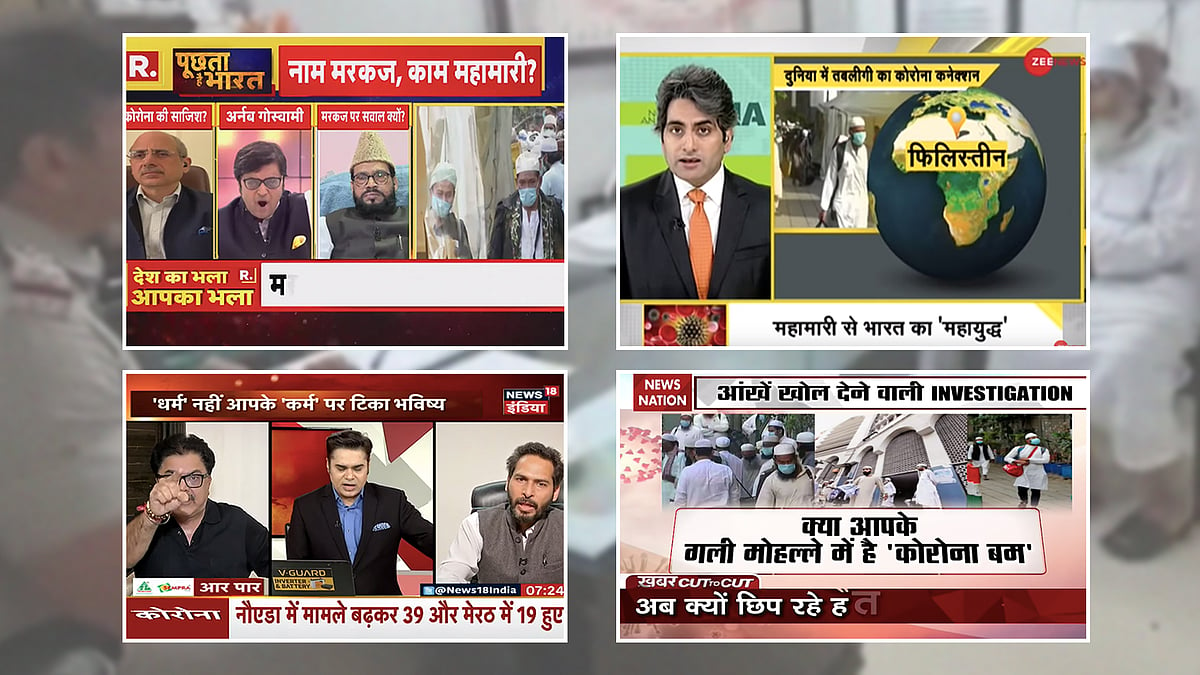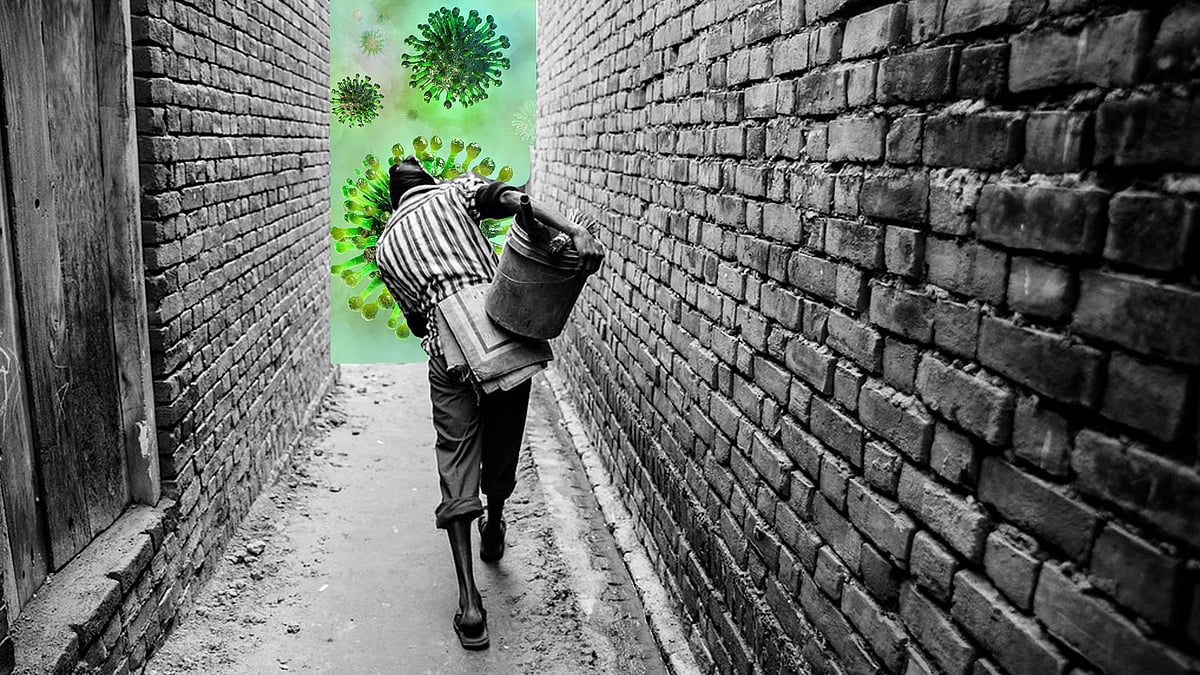Here’s what most TV news anchors are not telling you about the Tablighi Jamaat
The movement’s teachings are mostly about earning a place in heaven. They make some adherents dismissive of urgent worldly problems, including public health crises.
The large number of Covid-19 cases that have emerged from the international gathering at the headquarters of the Tablighi Jamaat in New Delhi are an ironic illustration of the Jamaat’s simple-minded orthodoxy and focus on the next life. It teaches adherents to unswervingly follow the literalist basic tenets of Islam.
Ironically, its very simplicity became its Achilles’ heel amid the pandemic.
The refusal of the Jamaat’s head, Maulana Saad, to disperse the gathering as Covid-19 fears spread, sprang from the movement’s blinkered insistence on unwavering adherence to the sort of pietistic orthodoxy that can only be called simplistic.
Rather than fear death, the Jamaat’s objective is to obtain a good place in heaven. In fact, it teaches adherents not to seek wealth, power, or status but only God’s favour.
Most of Saad’s followers would have blindly followed his instructions, for the organisation’s pietistic norms encourage adherents to keep away from televisions and radios. Their obedience resulted in a huge spike in infections.
It was the same story at the Jamaat’s much larger centre at Raiwind in Pakistan. In fact, many more infected persons appear to have spread to various parts of the world from the gathering there, also around the same dates.
Badly mishandled
By contrast, the Maharashtra police persuaded organisers to cancel the Tabligh Jamaat event that was to have been held around the same time at Vasai. If only authorities in Delhi too had been on the ball! Instead, they repeatedly mishandled the situation — or worse, did not handle it.
It simply defies belief that the intelligence agencies and the local police forgot that they had given permission for the Nizamuddin ijtima (congregation) or that a large number of foreigners were at the meet. Punitive action should be taken against officials who should have taken timely action.
Alarm bells were ringing loud and clear from March 12. Even if the authorities only got around to it by the time the ijtima concluded on March 15, all who attended should have been screened and placed in quarantine — the way all passengers returning from some countries were being. Random tests should have been carried out among them.
Even if those who remained had been quarantined on March 22, when Delhi was locked down, symptoms would have been noticed almost immediately among some of them. Other attendees could then have been tracked more expeditiously.
For any of this to succeed, however, the authorities needed to reach out to those who attended through well-respected Muslims and other civil society figures. Since this situation comes on the heels of the violence in east Delhi and the sense of victimhood that has developed in many Muslim minds, it is going to be that much tougher to get those who were at Nizamuddin to cooperate in being discovered.
It doesn’t help that the Tablighi Jamaat tends to draw a more general class, including the poorest and illiterate, than do other Islamic reform movements, which are generally aspirational middle class associations.
Given perceptions about the recent past, and the current media coverage, the ijtima participants might more easily be persuaded to treat the authorities as antagonists.
Taliban recruits
Indeed, many viewers of frothing news anchors may have got the impression that this is a recalcitrant, frightful, radical outfit. But, as mentioned before, the Tablighi Jamaat itself is simply about pietistic orthodoxy and trying to earn a place in heaven.
If the organisation is flawed, it’s for being too simplistic. Although Prophet Mohammed urged his followers to seek knowledge as far as they could, most Jamaat preachers reject any reading beyond the Quran.
The Jamaat has no political ideology of its own, for it eschews all things of this world. That, of course, makes some of the youth who emerge from its madrasas easily malleable as props for political violence--as a short-cut to heaven. Followers of the movement in Pakistan have at times found their way to radical groups such as the Taliban and Dawat-ul Irshad--from which the Lashkar-e-Taiba emerged.
Preaching, along the wayside and in congregations
Loosely translated, the word “tabligh” means preaching. Groups of the organisation’s activists travel around, spending their days on the road to urge (mainly) Muslims to live more strictly according to the literalist teachings of their religion.
These groups sometimes remain on the road for 40 days, but several groups go out for shorter periods, often three days. They stay at mosques or sarais along the way, cooking frugal fare for themselves and any who might join them.
Through the day, they knock at (mainly Muslim) doors and preach earnestly. Finding their preaching too narrow and other-worldly, many of those they approach try to avoid them.
External markers
To the Jamaat’s adherents, being a better Muslim means living strictly the way Prophet Mohammed and his followers lived 1,400 years ago. Ergo, hijabs for women and long open beards, caps, long kurtas, and short pyjamas for men. Cynics, therefore, sometimes jokingly refer to them as wearing “bade bhai ka jubba aur chhote bhai ka pyjama”, meaning elder brother’s kurta and younger brother’s pyjama.
The other major activity of the Tablighi Jamaat is the ijtima, where boys recite the Quran, having learnt it by rote, and famous preachers give moving sermons.
The emotions these sermons generate often resemble those of Pentecostal and other Evangelical Christian preachers. Some of the Jamaat’s preachers are renowned for being able to bring several thousand congregants to tears, and some to a swaying, sobbing frenzy of penance.
The work of the organisation is coordinated from one or the other markaz (literally centre). The Nizamuddin markaz is the global centre. However, the one at Raiwind also claims primacy, being by far the largest and attracting literally millions to its annual ijtima.
At several places, a markaz doubles not only as a mosque but also as a madrasa. Boys who live here learn the Quran by rote and are taught the Hadith (traditions) of the Prophet. A madrasa is generally headed by a Mufti who has studied for at least eight years at Deoband, or seminary of such stature. Ordinary Muslims come to these centres, sometimes for advice or adjudication, and many more when an ijtima is held, annually in most cases.
Open-ended association
Participation in ijtimas and the preaching journeys of up to 40 days is open-ended. So, the Jamaat is a movement that people join and leave more or less as they please. Apart from those who live long-term at a madrasa or markaz, membership is not strictly registered.
That is how the Tablighi Jamaat has become the largest movement in the world over the past 90-odd years, with a presence in almost every country and hundreds of millions loosely attached to it. Over the past couple of decades, many Muslims have joined it briefly, grown open beards, undertaken a journey or two, attended a few ijtimas, and felt like more pious, proper Muslims for a while. Most then turn away after a while, trim their beards, and get on with this life, here and now.
Three puritanical movements
The Jamaat differs from India’s other two major revivalist Islamist movements, the Ahle-Hadith and Jamaat-e-Islami. The other two are reformation movements that may be compared with the Baptist or Methodist Christian Protestant denominations in terms of historical parallels. Both are closely-knit religious associations of this world as much as the next. The Jamaat-e-Islami has the most ordered and disciplined membership and a tradition of obedience to the Amir, or chief. In this, it is somewhat similar to the Rashtriya Swayamsevak Sangh.
Although the Jamaat-e-Islami was also, like the Tablighi Jamaat, largely focused on puritanical preparation for the afterlife when it began in 1945, its founder, Maulana Abul A’la Maududi, turned it more political by the 1960s in Pakistan.
That brought it closer in orientation to the Muslim Brotherhood, the overtly political Egyptian organisation. The Jamaat-e-Islami became the chief vehicle for General Zia-ul Haq’s Islamisation of Pakistan in the 1980s.
The Ahle-Hadith is the oldest of the three movements, having begun in the mid-19th century. Doctrinally, it rejects all four established schools of Sunni law, and recognises only the authority of the Quran and the traditions of the Prophet. It has been compared with Saudi Wahhabism, and is often referred to as a Salafi group.
All three movements disparage the veneration of ziyarat shrines that is traditionally common among South Asian Muslims.
 Coronavirus and Nizamuddin: TV news returns to bigotry with a bang
Coronavirus and Nizamuddin: TV news returns to bigotry with a bang
 Coronavirus, social distancing, and the return of caste apologists
Coronavirus, social distancing, and the return of caste apologists